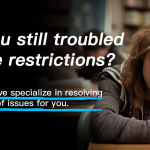In an increasingly digital – age, the threat of fake IDs and identity theft looms large. The year 2025 may bring new and more sophisticated ways for fraudsters to create and use fake IDs, and it is crucial for individuals to take proactive steps to protect their personal information.
Understanding the Risks of Fake IDs
Fake IDs are not just a matter of under – age drinking or getting into clubs. They can be used for a wide range of illegal activities, including financial fraud, identity theft, and even terrorist activities. Fraudsters may use fake IDs to open bank accounts, apply for credit cards, or make purchases in someone else’s name. This can lead to significant financial losses for the victim and also cause long – term damage to their credit score.
Moreover, in the context of 2025, with the advancement of technology such as 3D printing and high – quality digital editing software, creating a convincing fake ID has become easier. Cybercriminals are constantly looking for ways to obtain personal information to create these fake IDs. They may use phishing attacks, data breaches, or social engineering techniques to gather sensitive information like names, dates of birth, social security numbers, and addresses.

Types of Personal Information at Risk
- Identifying Information: This includes your full name, date of birth, and social security number. These are the building blocks for identity thieves. For example, with a social security number, a fraudster can apply for credit in your name and potentially ruin your credit history.
- Financial Information: Bank account numbers, credit card numbers, and PINs are highly sought – after by criminals. They can use this information to make unauthorized transactions, drain your accounts, or make large purchases that you will be held responsible for.
- Contact Information: Your address, phone number, and email address can be used to further the fraud. For instance, a fraudster may change your address on file with your bank or credit card company to divert statements and alerts, making it harder for you to detect the fraud in a timely manner.
Protecting Your Personal Information Online
The internet is a breeding ground for identity theft and fake ID – related fraud. Here are some key steps to protect your information online:
- Use Strong Passwords: Create passwords that are a combination of uppercase and lowercase letters, numbers, and special characters. Avoid using common words or phrases and change your passwords regularly. For example, instead of using “password123”, use something like “P@ssw0rd!n9#d”.
- Enable Two – Factor Authentication (2FA): This adds an extra layer of security. Even if a fraudster manages to get your password, they will still need a second form of verification, such as a code sent to your phone, to access your account.
- Be Wary of Phishing Emails: Phishing emails are designed to look like legitimate messages from banks, companies, or government agencies. They often contain links that, when clicked, can install malware on your device or direct you to a fake website where you are asked to enter your personal information. Check the sender’s email address carefully, and if in doubt, do not click on any links. For example, an email from your bank should come from an official domain like “@yourbank.com”, not from a random or misspelled domain.
- Keep Your Software Updated: Regularly update your operating system, antivirus software, and other applications. Software updates often include security patches that can protect you from the latest threats.
Protecting Your Personal Information Offline
It’s not just online threats that you need to be aware of. Here are some ways to protect your information offline:
- Shred Sensitive Documents: Before throwing away any documents that contain personal or financial information, shred them. This includes bank statements, credit card offers, and old tax returns. Fraudsters may go through your trash to find such information.
- Be Careful with Public Wi – Fi: Public Wi – Fi networks are often unsecured, making it easy for hackers to intercept your data. Avoid accessing sensitive information like online banking or shopping on public Wi – Fi. If you must use it, consider using a virtual private network (VPN) to encrypt your connection.
- Protect Your Mail: If you receive important mail such as credit card statements or tax forms, consider using a locked mailbox. Fraudsters may steal your mail to get access to your personal information.
What to Do if You Suspect Your Personal Information Has Been Compromised
If you suspect that your personal information has been compromised, act quickly:
- Contact Your Financial Institutions: If you think your bank account or credit card information has been stolen, call your bank or credit card company immediately. They can freeze your accounts and monitor for any suspicious activity.
- Place a Fraud Alert on Your Credit Report: You can place a fraud alert on your credit report with one of the three major credit bureaus (Equifax, Experian, and TransUnion). This will notify potential creditors to take extra steps to verify your identity before extending credit in your name.
- File a Police Report: Filing a police report can help in the investigation of the fraud and may also be required by your financial institutions or credit bureaus.
- Monitor Your Accounts Regularly: Check your bank statements, credit card statements, and credit reports regularly for any unauthorized transactions or accounts.
Common Problems and Solutions
- Problem: Receiving Suspicious Emails Asking for Personal Information
Solution: Do not respond to these emails. Instead, contact the supposed sender directly through their official website or customer service number (not the one provided in the suspicious email). Verify if they actually sent the email. If it is a phishing attempt, report it to your email provider and the relevant authorities.
- Problem: Lost or Stolen Wallet with ID and Credit Cards
Solution: Immediately contact your credit card companies to cancel the cards and prevent unauthorized use. Report the lost or stolen ID to the relevant authorities, such as the DMV. You may need to apply for a new ID. Also, monitor your accounts for any unusual activity.
- Problem: Discovering Unauthorized Accounts in Your Name
Solution: Contact the financial institution that opened the unauthorized account. Provide them with proof of your identity and evidence that you did not open the account. Place a fraud alert on your credit report and file a police report. Regularly check your credit report to ensure that the unauthorized account is removed and no further fraud occurs.

- Problem: Weak Passwords That Are Easy to Guess
Solution: Change your passwords immediately to stronger ones following the guidelines mentioned earlier. Consider using a password manager to generate and store complex passwords securely. Also, enable two – factor authentication for all your important accounts.
- Problem: Falling Victim to a Data Breach at a Company Where You Have an Account
Solution: Monitor the company’s official communications for any instructions on what to do. Change your password for that account and enable two – factor authentication if available. Check your financial accounts and credit report for any signs of fraud. Consider freezing your credit with the credit bureaus as an added precaution.
Fake ID Pricing
unit price: $109
| Order Quantity | Price Per Card |
|---|---|
| 2-3 | $89 |
| 4-9 | $69 |
| 10+ | $66 |



